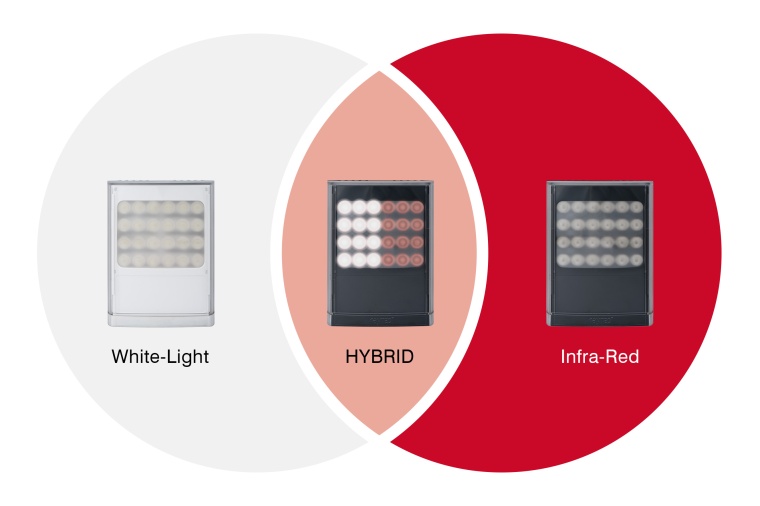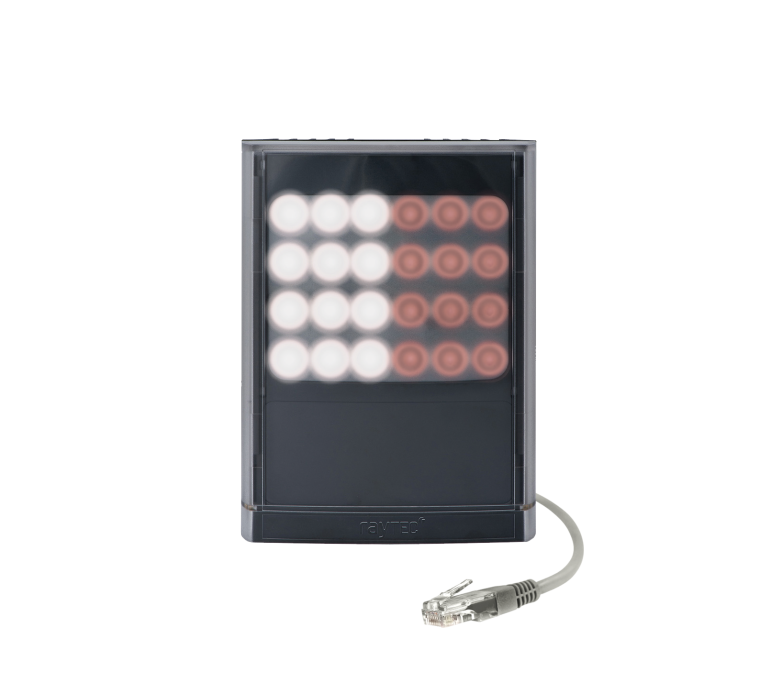Hybrid Network Illuminators for Day or Night
Its totally predictable the light levels will drop at the end of the day to such a low level that conventional surveillance cameras struggle to provide a satisfactory image. Light...


It‘s totally predictable – the light levels will drop at the end of the day to such a low level that conventional surveillance cameras struggle to provide a satisfactory image. Lighting up the scene with visible light is one option; flooding it with Infra-Red is another. Ideally, both would be available.
Hybrid network illuminators combine White-Light and Infra-Red (IR) technology into a single IP connected unit. Incorporating White-Light and IR together brings new opportunities to end users with increased functionality and the potential to reduce costs. Traditionally, applications using White-Light and IR would require two separate illuminators, but with Hybrid combining both technologies, users can fulfill their needs using a single illuminator.
Wavelength
But what about performance of each wavelength compared to a dedicated White-Light or IR illuminator? A true Hybrid solution should offer the same power and performance as two dedicated illuminators and be thermally engineered to ensure reliability and long life is still achieved. With each wavelength only ever being used independently, the illuminator’s heat sink should still be capable of keeping the LEDs cool, even if it is delivering more power.
Reducing the number of illuminators on-site means significant cost savings can be made; not just in the capital outlay of the illuminators themselves, but also in reducing associated costs such as the amount of cable required, the number of power supplies and other infrastructure. Replacing separate IR and White-Light illuminators with a single Hybrid solution effectively halves the total cost of an installation.
Greater Control
When considering the use of IP and network-controlled variants, Hybrid illuminators also provide a quicker, more dynamic security response. A VMS or web interface can be used to control an illuminator‘s power, timing and pattern of light. With Hybrid devices, the wavelength can also be controlled, allowing a seamless switch between White-Light and IR. The wavelength can be adjusted manually in real time or integrated with other security devices to deliver pre-programmed lighting responses for different situations. IR illumination provides covert surveillance, while White-Light can be triggered on demand to provide a visual deterrent using a flashing output, or to provide additional scene information for color cameras.
In summary, Hybrid illuminators improve the quality of a surveillance system by allowing a more dynamic security response (especially with IP enabled variants), while also helping to reduce costs and make the overall system more efficient.
Business Partner
Raytec Ltd.Unit 15 Wansbeck Business Park, Rotary Parkway
NE63 8QW Ashington, Northumberland
UK
most read

Is Your Venue Ready for Martyn’s Law?
Martyn’s Law demands stronger security by 2027. Is your venue prepared to protect and respond?

When the Internet stumbles: Why DNS is important
When DNS fails, the internet stumbles-AWS outage proves resilience and redundancy are vital for digital trust

GIT SECURITY AWARD 2026 - The winners have been announced!
GIT SECURITY AWARD 2026: The best safety and security solutions of the year - now an overview of all winners

Assa Abloy's battery-powered Aperio KL100 secures lockers
Boost workplace security and operational flexibility by securing more than just doors.







